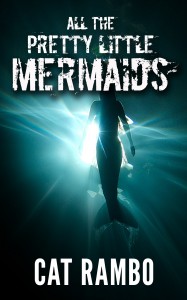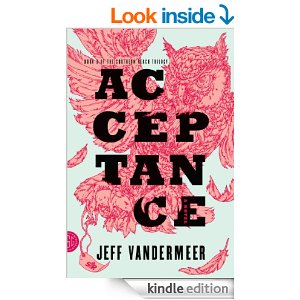

Charlotte Perkins Gilman was an American editor, writer, and lecturer whose short story “The Yellow Wallpaper,” about a woman’s descent into madness, is often revisited in college literature classes. She was a single mother who supported herself by writing — no small accomplishment today, let alone at the time she was doing so, the late 19th and early 20th centuries.
Herland is often treated as though it stands alone, but it’s actually the middle volume of a trilogy, preceded by Moving the Mountain in 1911 and followed by With Her in Ourland in 1916. The work was originally published as a serial in a magazine called The Forerunner that Gilman edited; it did not appear as a complete book until 1979, when Pantheon Books published it.
Herland is a utopian novel, in which three men, Vandyk (the narrator), Terry, and Jeff stumble across a civilization where the women reproduce asexually and there are no men. This turns out to lead not to a perfect civilization, but certainly one that seems more appealing than the one Gilman found herself in. Gilman uses the book as a device with which to explore constructed ideas of gender. It is an appealing society in many others; in others, it’s a bit cold and calculating. Girls who are overly rebellious or mouthy, for example, will not be allowed to reproduce.
One of the things that’s refreshing about the book is that it’s not written as though the lack of males is a deficit that warps society. Instead, it’s simply the way things are, and the Herlanders seem capable of getting along quite well without it.
Gilman was one of the important suffrage speakers of her time and a bit of a polymath. If you want to go further into her writing, I suggest a piece of nonfiction, her work on economics, Women and Economics: A Study of the Economic Relation Between Men and Women as a Factor in Social Evolution, which originally appeared in 1898.
You can find Herland online in its entirety at Project Gutenberg, along with much of Gilman’s other work.
#sfwapro
...

Doctor Rat witnesses the experiments being carried out on his fellow animals, wandering through a laboratory and speaking to us in a way that makes it clear whose side he’s on while showing how brutal the details of this book can be:
I should now like to sing “Three Blind Rats.” It’s part of the experimental program of music that’s being channeled toward certain rats, to make them more docile and sweet. Several of them are indeed beginning to nuzzle up to each other, one of them even executing a light-fantastic tripping of his tail, in time to the beat.
In the cage beside him, we actually have three blind rats. In fact, we have twenty-three blind rats, part of a magnificent new experiment initiated by a very ambitious student, who I’m featuring in this month’s Newsletter. He’s a sensitive chap and it was his exquisite sensitivity that caused him to dream up the item that’s become the latest rage here at the lab: the fabulous removal of eggs from a female rat’s body and the grafting of them to different parts of the male rat’s body — to the tail, to the ear, to the stomach. And for the past twenty-three days he’s been grafting them to their eyeballs! So now it’s time we all sang that promising young scientist a song.
Doctor Rat is not all horrifying detail though. There’s a lot of sweetness to it, including a moment where a human orchestra plays music in order to warn whales of approaching whalers that makes me cry, every time, while read silently or aloud. The amount of emotion it manages to stir in me is visceral. I wish I knew how Kotzwinkle accomplished it.
...
 I first encountered this series in the late 70s, while a teen, and it hooked me to the point where I’ll always note a Sheri S. Tepper book coming out, even though some have gotten a little didactic. But this series? Not only is it is awesome, but it interlocks with two other trilogies set in the same world and with many of the same characters.
I first encountered this series in the late 70s, while a teen, and it hooked me to the point where I’ll always note a Sheri S. Tepper book coming out, even though some have gotten a little didactic. But this series? Not only is it is awesome, but it interlocks with two other trilogies set in the same world and with many of the same characters.
While The True Game Trilogy starts in what seems to be a fantasy world, where different people manifest different Talents that play off each other in a massive societal game. Protagonist Peter is part of a school that teaches its students how to play the game, and part of the joy of the book is the detail with which the game is worked out:
“Talisman,” I blurted. “Talisman to King’s Blood Four.”
“Good.” Gervaise actually smiled. “Now, tell me why?”
“Because our side can’t see what pieces may be hiding behind the King. Because Talisman is an absorptive piece, that is, it will soak up the King’s play. Totem is reflective. Totem would splash it around, we’d maybe lost some pieces…”
“Exactly. Now, students, visualize if you please. We have King, most durable of the adamants, whose ‘blood,’ that is, essence, is red light.Demons, most powerful of the ephemera, whose essence is shadow. Tragamors making barriers at the sides of the Demesne. The player is a student, without power, so he plays Talisman, an absorptive piece of the lesser ephemera. Talisman is lost in play, ‘sacrificed’ as we say. THe player gains nothing by this,but neither does he lose much, for with this play the Demesne is changed, and the game moves elsewhere in the purlieu.”
Peter thinks himself Talent-less but when it does emerge, it leads to danger connected to the secrets around Peter’s birth.
The magic system is lovely, there’s two strong female characters in the form of Jillian and Mavin Manyshaped,ach of whom gets her own later trilogy (with its own version of earlier events), the characters are engaging and/or often disturbing, and the plot is nicely put together, slowly shifting over to reveal itself to actually be science fiction.
There are others of Tepper’s works that I’d recommend — I adore the Marianne series, for one, and I reread Grass on a regular basis, as well as The Gate to Women’s Country. But this series was my gateway to Tepper and as such it has a pull for me above all the rest. If you want to know more about Tepper hereself, here’s an interview she did with Neal Szpatura for Strange Horizons in 2008 and an interview with John Scalzi.
#sfwapro
...

Palwick is one of my favorite science fiction writers. She can wring your heart dry or make you laugh, and I always emerge from one of her stories still wrapped in it, thinking about it for hours, sometimes days afterwards, unfolding some of the thoughts arising in answer to the questions and observations she presents.
Jo Walton talks eloquently about Shelter in a column for Tor.com, which I read earlier this year in the collection What Makes This Book So Great (also highly recommended). Walton also calls out the point of view:
The book opens with the third narrator, House, an AI convinced it isn’t an AI. AIs are illegal in the US because they’re defined as legally persons, and therefore owning them is slavery. There’s also the AI terrorism problem… The House’s point of view is done beautifully. It feels entirely real, entirely immersive, and you can really believe the way it reasons its way through decisions. The book begins in the “present” of the story, during a very severe storm (global warming has got worse) and goes back to the earlier events that led to the world and the relationships we’re given at the beginning. Palwick directs our sympathies as a conductor directs a symphony. The twenty years of history and events we’re shown, from different points of view, build up a picture of a future that has clearly grown from our present. Every detail has second-order implications””you have bots doing the cleaning, so you have people afraid of bots, and people who think doing your own cleaning is a religious act, and you have sponge bots trying to stem a flood as a metaphor for people unable to cope.
In my Writing Fantasy & Science Fiction Stories class, we often look at the first paragraphs of works to see how much gets set up in it. Palwick’s constructs a world that clicks neatly in place as each sentence unfolds:
That same morning, Kevin Lindgren’s house warned him not to go outside. The house knew the sky was dangerous. Everyone knew. Kevin didn’t even need a house with a brain to tell him: all the newscasts said so, and special bulletins during the soap operas and talk shows, and, most especially, the sky itself, gray and howling, spitting sheets of rain and barrages of hailstones. Kevin himself knew that the sky was dangerous. Not fifteen minutes before he left the house, he’d watched a gust of wind pick up the patio table on his back deck and blow it down Filbert Street. Filbert wasn’t really a street at all, here; it was actually ten flights of steps leading steeply down Telegraph Hill to Levi Plaza and the waterfront. The patio table was teak, and quite heavy, but even so, the wind sent it a long way down the steps, until finally it came to rest in a neighbor’s garden. It could just as easily have gone through the neighbor’s roof or window.
Palwick is a writer I watch for. With her books it’s not so much a question of whether I’ll buy them as when. She’s also written one of my favorite replies to Daniel Keyes’ Flowers for Algernon in the title story from her collection The Fate of Mice. Anything by Palwick is good, but Shelter shows how marvelous SF can be in the hands of a master.
#sfwapro
...

Her kingdom is populated by races of talking animals: fox-people, bear-people, bird-people, etc. Eventually she decides to invade her former world, marshaling her forces and marching back to her homeland, using technology from the Blazing World in its defense.
Cavendish, who was the Duchess of Newcastle, evens writes herself into the text:
Hereupon a Councel was called, and the business debated; but there were so many cross and different Opinions, that they could not suddenly resolve what answer to send the Empress; at which she grew angry, insomuch that she resolved to return into her Blazing- World, without giving any assistance to her Countrymen: but the Duchess of Newcastle intreated her Majesty to abate her passion; for, said she, Great Councels are most commonly slow, because many men have many several Opinions: besides, every Councellor striving to be the wisest, makes long speeches, and raise many doubts, which cause retardments. If I had long-speeched Councellors, replied the Empress, I would hang them, by reason they give more Words, then Advice. The Duchess answered, That her Majesty should not be angry, but consider the differences of that and her Blazing-World; for, said she, they are not both alike; but there are grosser and duller understandings in this, than in the Blazing-World.
I found the book through Dale Spender’s excellent Mothers of the Novel, and one reason to read Cavendish is so she doesn’t get lost. So many of the writers Spender touches upon have been obscured, while their male peers remain, and give students the impression that only men were writing. Cavendish was a notable and prolific author of her time as well as an English aristocrat who spent time at the French court. Her life is well worth investigation, full of trials and tribulations as well as triumphs.
Other speculative fiction writers have referenced this book: Alan Moore in the League of Extraordinary Gentlemen and China Mieville in Un Lun Dun. You can find the book online in its entirety here.
#mc_embed_signup{background:#fff; clear:left; font:14px Helvetica,Arial,sans-serif; }
/* Add your own MailChimp form style overrides in your site stylesheet or in this style block.
We recommend moving this block and the preceding CSS link to the HEAD of your HTML file. */
#sfwapro
...

A Theory of Fun for Game Design is written by an author who deeply loves games, understands how they work, and believes in them as an art form. As the forward by Will Wright notes, Koster brings a multi-disciplinary method to the examination of games, pulling out basic concepts and breaking them down in a way that is both easy to understand and enjoyable to read. Accompanying his pithy observations are cartoons illustrating each concept, such as the illustration accompanying “Stories are powerful teaching tools in their own right, but games are not stories,” in which one student says to another, “I beat the last level of Ulysses last night. I had to use god mode for the end boss. Molly is really tough!”
A listing of the chapters provides a good sense of the book:
With Gamergate still brewing merrily on Twitter, those last few items seem particularly important. “The Ethics of Entertainment” contains all sorts of useful stuff, including a passage about end user experience typical in Koster’s wry, succinct summations:
The dressing is tremendously important. It’s very likely that chess would not have its long-term appeal if the pieces all represented different kinds of snot.
He goes on to say something that resonates with recent discussions:
The ethical questions surrounding games as murder simulators, games as misogyny, games as undermining traditional values, and so on are not aimed at games themselves. They are aimed at the dressing.
Koster extends that even further, saying directly “Creators in all media have a social obligation to be responsible with their creations.”
Despite Koster’s correct insistence that games are not stories, for writers, Koster’s book is well worth reading. A lot of the material overlaps with the ways people enjoy stories, particularly the section about the brain.
The book may also change the way you perceive games when playing them, mainly because Koster talks about them in terms of an art form, like a story or a painting, rather than the trivial pursuit label that sometimes get slapped on such entertainments. Koster believes deeply in the evolution of games to something as immersive and enlightening as any other media.
#sfwapro
...

Daniel Abraham came out with the most recent of his Dagger and Coin series, The Widow’s House, and it was just as enjoyable as the first three. Abraham has a gift for flawed characters that you care deeply about, whose dilemmas rack the reader to the heart even when they’re doing despicable things.
Carol Berg’s Dust and Light. Carol consistently hits it out of the ballpark when it comes to epic fantasy, and this start to a trilogy is no exception. If you like Sanderson, Martin, or Bujold’s fantasy, you will like Carol Berg.
The Hole Behind Midnight by Clinton Boomer is terrific urban fantasy with a highly original protagonist. Think of a mash-up of Jim Butcher’s The Dresden Files with the Tyrion Lannister sections of Game of Thrones and Salman Rushdie’s Midnight’s Children and you’re in the general vicinity.
M.L. Brennan manages urban fantasy outside the tired norm with Iron Night, the latest in her Generation V series. I will admit, her kitsune character has me totally captivated, but the vampires manage not to be cliche, and protagonist Fortitude Scott is wonderful, reminding me of Rob Thurman’s engaging Caliban series.
Stephen Brust and Skyler White’s The Incrementalists is urban fantasy taken in a different direction, with an ancient society intent on nudging humanity along in the right directions.
...
 I’m timing this post to come out before I’ve finished the last book of the Southern Reach trilogy, ACCEPTANCE, so I haven’t read the entire trilogy yet. But I recommend the overall trilogy based on my utter enthusiasm for the first two books, ANNIHILATION and AUTHORITY.
I’m timing this post to come out before I’ve finished the last book of the Southern Reach trilogy, ACCEPTANCE, so I haven’t read the entire trilogy yet. But I recommend the overall trilogy based on my utter enthusiasm for the first two books, ANNIHILATION and AUTHORITY.
VanderMeer is one of the finest writers alive*, in my opinion, able to craft worlds that are eerie and beautiful and intriguing and, above all, unlike anything you’ve read before. Both ANNIHILATION and AUTHORITY are full of moments that smacked me in the face with their perception and beauty in a way that still leaves me thinking about them.
The books have that sense of the weird that haunts other works, like House of Leaves or The Crying of Lot 49. As though one were viewing the everyday world with a new lens, one that slants them, puts them askew, renders them mysterious. And they do it beautifully.
The publisher’s taken the unusual (increasingly less so, though) step of releasing all three books in one year — particularly awesome for those of us who hate waiting for the next installment to come out.
*Full disclosure: Not only do I know Jeff, but we’ve co-written a novelette, The Surgeon’s Tale, together. But part of my pleasure in that friendship/co-authorship is a deep awareness of how very very good his writing is.
...
Last night in North America for a while. Here’s some of the books I’ve packed onto the Kindle.
Jeff VanderMeer’s ANNIHILATION and AUTHORITY.
Carol Beg’s DUST AND LIGHT.
Several free books in Spanish, including DONA PERFECTA.
QUANTUM ENGIMA by Brice Rosembaum
THE LEFTOVERS by Tom Perrotta
THE CHILDREN’S BOOK by A.S. Byatt
THE PRINCESS OF PANCHALA by Tom Wright
MORTE by Robert Reppino
WHAT THE PLUS by Guy Kawasaki
MR. MERCEDES by Stephen King
MINDTOUCH by M.C. A. Hogarth
THE TRANSPARENT SOCIETY by David Brin
...

I read Child of the Dark: The Diary of Carolina Maria de Jesus and Rubyfruit Jungle around the same time and in each case, the narrator stayed with me for years, was like a friend I’d met at summer camp or some other event, never seen again but well-remembered all the same.
Later I’d come to her poetry at a time when my ears were ready to drink it in. Her voice was sharp and observant, outspoken and nuanced all at once. Here’s one of my favorites among her poems, “I Rise.”
You may write me down in history
With your bitter, twisted lies,
You may tread me in the very dirt
But still, like dust, I’ll rise.Does my sassiness upset you?
Why are you beset with gloom?
‘Cause I walk like I’ve got oil wells
Pumping in my living room.Just like moons and like suns,
With the certainty of tides,
Just like hopes springing high,
Still I’ll rise.Did you want to see me broken?
Bowed head and lowered eyes?
Shoulders falling down like teardrops.
Weakened by my soulful cries.Does my haughtiness offend you?
Don’t you take it awful hard
‘Cause I laugh like I’ve got gold mines
Diggin’ in my own back yard.You may shoot me with your words,
You may cut me with your eyes,
You may kill me with your hatefulness,
But still, like air, I’ll rise.Does my sexiness upset you?
Does it come as a surprise
That I dance like I’ve got diamonds
At the meeting of my thighs?Out of the huts of history’s shame
I rise
Up from a past that’s rooted in pain
I rise
I’m a black ocean, leaping and wide,
Welling and swelling I bear in the tide.
Leaving behind nights of terror and fear
I rise
Into a daybreak that’s wondrously clear
I rise
Bringing the gifts that my ancestors gave,
I am the dream and the hope of the slave.
I rise
I rise
I rise.
Learning of her death this morning was a blow. She was bold and wonderful and eloquent, all that a poet should be. She spoke about our times and testified to her experience so others could learn from it. I have a special family in her heart, made up of the writers that have shaped me. Chaucer’s there, and Joanna Russ, and so many others. I wish I’d had the chance to meet her in person.
Here’s a recent quote from her I came across this morning and love: The ache for home lives in all of us, the safe place where we can go as we are and not be questioned.
I’m glad you’re home, Maya. But oh, those of us still aching for it will miss you.
...
Want access to a lively community of writers and readers, free writing classes, co-working sessions, special speakers, weekly writing games, random pictures and MORE for as little as $2? Check out Cat’s Patreon campaign.

"(On the writing F&SF workshop) Wanted to crow and say thanks: the first story I wrote after taking your class was my very first sale. Coincidence? nah….thanks so much."

(fantasy, short story) Even Duga the Prestidigitator, who never pays much attention to anything outside his own hands, raised an eyebrow when I announced I’d be hooking the manticore up to my wagon.


This site is protected by reCAPTCHA and the Google Privacy Policy and Terms of Service apply. This site is a participant in the Amazon Services LLC Associates Program, an affiliate advertising program designed to provide a means for sites to earn advertising fees by advertising and linking to Amazon.com.